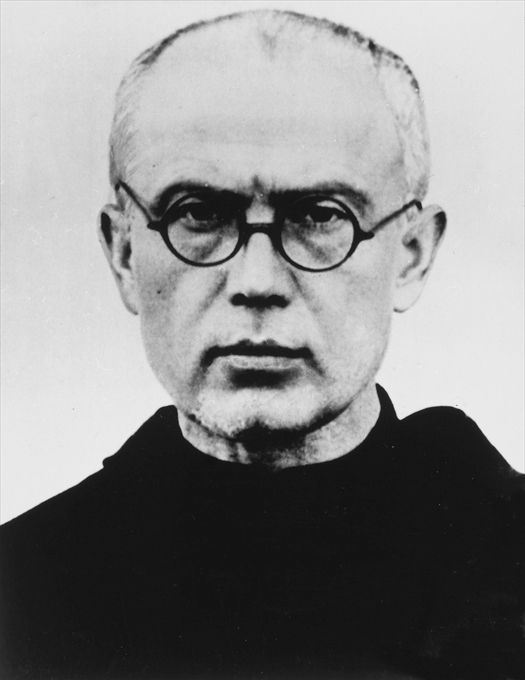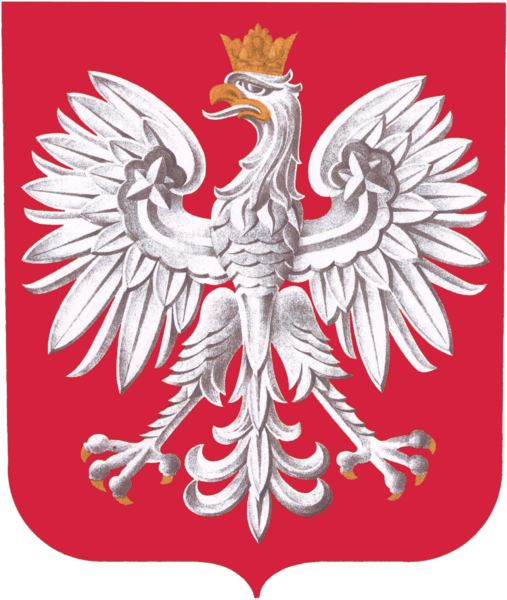 |
| St. Maximilian Kolbe |
A year before Teresa Benedicta (Edith Stein) was killed at Auschwitz, another martyr met death there. At the age of 47, St. Maximilian Kolbe was given a lethal injection after suffering two weeks of dehydration and starvation.
On a Catholic calendar marking the saints' feast days, today we see "St. Maximilian Maria Kolbe, Pr., F., M., Pt. of printers and publisher, drug addiction sufferers and political prisoners." "Pr" denotes he was a priest and "F", a Franciscan Friar. The "M", of course, marks his martyr's death, and the manner of his death -- through lethal injection of carbolic acid -- makes him a sympathetic intercessor for those who suffer from drug addictions. Fr. Kolbe is claimed as a patron of political prisoners because he himself was imprisoned for aiding World War II Polish refugees and sheltering thousands of Jews in his friary during the Nazi invasion of Poland. A political prisoner is generally defined as someone who is imprisoned because his activity shows opposition to the ruling government. Not only did Fr. Kolbe defy the Nazis through his work of protecting the persecuted, but earlier in his life he had used newspaper, magazine, and radio to speak out against the enemies of the Catholic Church and the atrocities of the Nazi regime. Hence, he is also the patron of printers and publishers. Interestingly, when Fr. Kolbe was a young man, his father was hanged for his participation in the struggle against Russia for Polish independence.
Like Edith Stein, Fr. Kolbe was a scholar and earned a doctorate in both philosophy and theology. He used his education to teach and catechize through his work in the media. In his student days he founded the movement Militia Immaculata (the army of the Immaculate), dedicated to the the Blessed Virgin Mary. Through total consecration to Mary, the movement sought to evangelize the world and convert sinners. In his short life, Fr. Kolbe also spent six years in Japan as a missionary and built a monastery near Nagasaki. Through his untiring work, he showed his great love for neighbor; but ultimately it was his death that gave the strongest evidence of how great this love was.
 |
| Entrance to the Auschwitz Concentration Camp |
"No one has greater love than this, to lay down his life for his friends." In 1941 when Fr. Kolbe was held at the Auschwitz concentration camp, three prisoners escaped. To discourage further attempts, the Nazi commander chose ten men to starve to death. Fr. Koble was not selected, but when one of the chosen men -- Franciszek Gajowniczek -- cried out, "My wife! My children!" Fr. Kolbe volunteered to take the place of the young husband and father. The switch was permitted, and he and his nine companions were led to the starvation bunker. Over a two-week period, the nine died, leaving Fr. Kolbe, who gave them spiritual comfort and encouragement during their agony, as the last survivor. To clear the cell, Fr. Kolbe was given the lethal injection on August 14, 1941. Franciszek Gajowniczek was liberated from Auschwitz in 1944 and lived to the age of 94. He declared that "so long as he ... has breath in his lungs, he would consider it his duty to tell people about the heroic act of love by Maximilian Kolbe."
 |
| Coat of Arms of Poland |
Maximilian Maria Kolbe was canonized by his compatriot Pope John Paul II in 1982, who declared him the "Patron Saint of Our Difficult Century."
Additional Resources:
Sermon by Pope John Paul II at the canonization of Maximilian Kolbe
Maximilian: Saint of Auschwitz - DVD of one-man drama by actor Leonardo Defiilippis
A Man for Others : Maximilian Kolbe, Saint of Auschwitz in the Words of Those Who Knew Him by Patricia Treece. This is out of print, so check your library.
Coloring page for St. Maximilian Kolbe
No comments:
Post a Comment